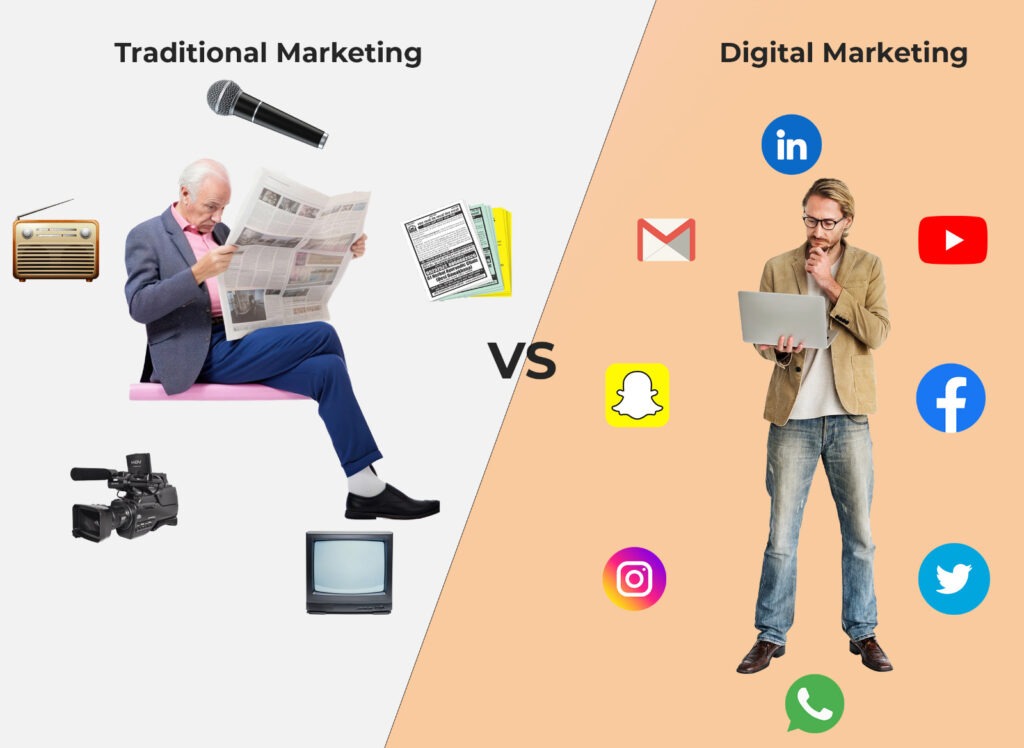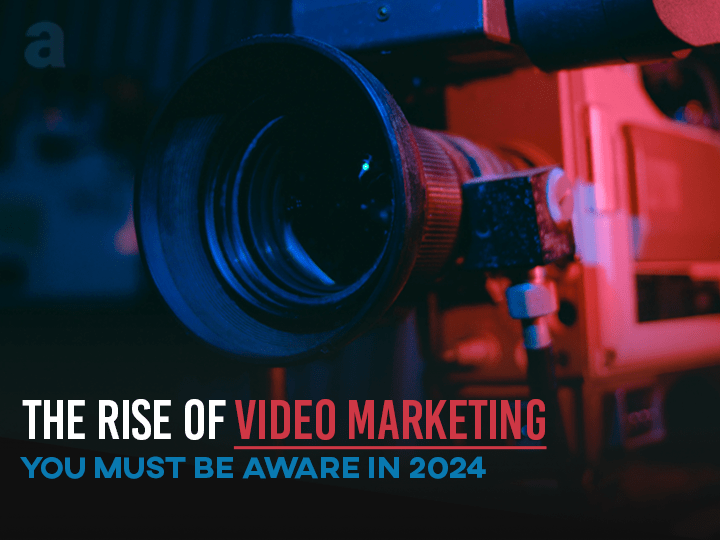In an ever-changing marketing landscape, the rise of digital platforms has revolutionized the way businesses communicate with their target audience. Digital marketing has emerged as an effective tool that differs from traditional marketing methods. In this blog, we explore the key differences between digital marketing and traditional marketing. To understand how the digital age has changed the marketing game.
Coverage and targeting:
Digital marketing opens up opportunities for outreach and targeting. With traditional marketing, companies had limited options to reach their audience through print ads, TV ads, or billboards. On the other hand, digital marketing allows businesses to target specific demographics, interests, and behaviors. Social media advertising, search engine optimization, and email marketing help businesses reach a global audience and ensure their message reaches the right people at the right time.
Cost-effectiveness:
One of the important advantages of digital marketing is its cost-effectiveness. Traditional marketing methods often require significant investments, such as print materials, television airtime, or physical stores. Digital marketing, on the other hand, offers cheaper alternatives. For example, with social media advertising, businesses can set budget limits and reach their target audience without breaking the bank. Additionally, digital marketing campaigns can be easily adjusted and optimized for performance, maximizing ROI.

Measurability and analysis:
Unlike traditional marketing, digital marketing offers extensive measurement and analysis. Digital campaigns allow businesses to track and measure every interaction and engagement. Digital marketing tools provide real-time data and insights from website traffic and results to email open and click-through rates. It enables companies to make data-driven decisions, optimize their strategies and understand what works and what doesn’t, leading to continuous improvement and better results.
Communication and engagement:
Digital marketing brings interaction and engagement to a whole new level. Unlike traditional marketing, where communication is one-way, digital platforms allow businesses to connect with their audience in real time. For example, social media platforms allow businesses to interact directly with customers through comments, messages, and live chats. This level of engagement fosters stronger relationships, increases brand loyalty, and creates a sense of community around the brand.
Personalization and customization:
Digital marketing allows businesses to adapt and customize their marketing efforts. Using data and analytics, businesses can deliver messages and offers targeted to individual customers. For example, email marketing campaigns can be tailored to customer preferences and behavior. Personalization creates a more tailored and relevant customer experience, increasing the likelihood of conversions and long-term loyalty.
Flexibility and adaptability:
Digital marketing offers unparalleled flexibility and adaptability. Traditional marketing methods often require significant lead time and resources to make changes or adjustments to campaigns. Digital marketing, on the other hand, allows businesses to make real-time changes, test different strategies and quickly adapt to market trends. This flexibility is essential in today’s fast-paced and ever-evolving digital environment.
Digital marketing has revolutionized the way companies advertise their products and reach their target audience. It offers better reach, targeting, cost-effectiveness, and engagement compared to traditional marketing methods. Digital marketing measurability and analytics enable companies to make data-driven decisions, while customization and personalization improve the customer experience.
Additionally, the flexibility and adaptability of digital marketing give businesses a competitive advantage in today’s dynamic marketplace. As we embrace the digital age, understanding the differences between digital and traditional marketing is essential for businesses to thrive and succeed in the rapidly changing marketing landscape.

